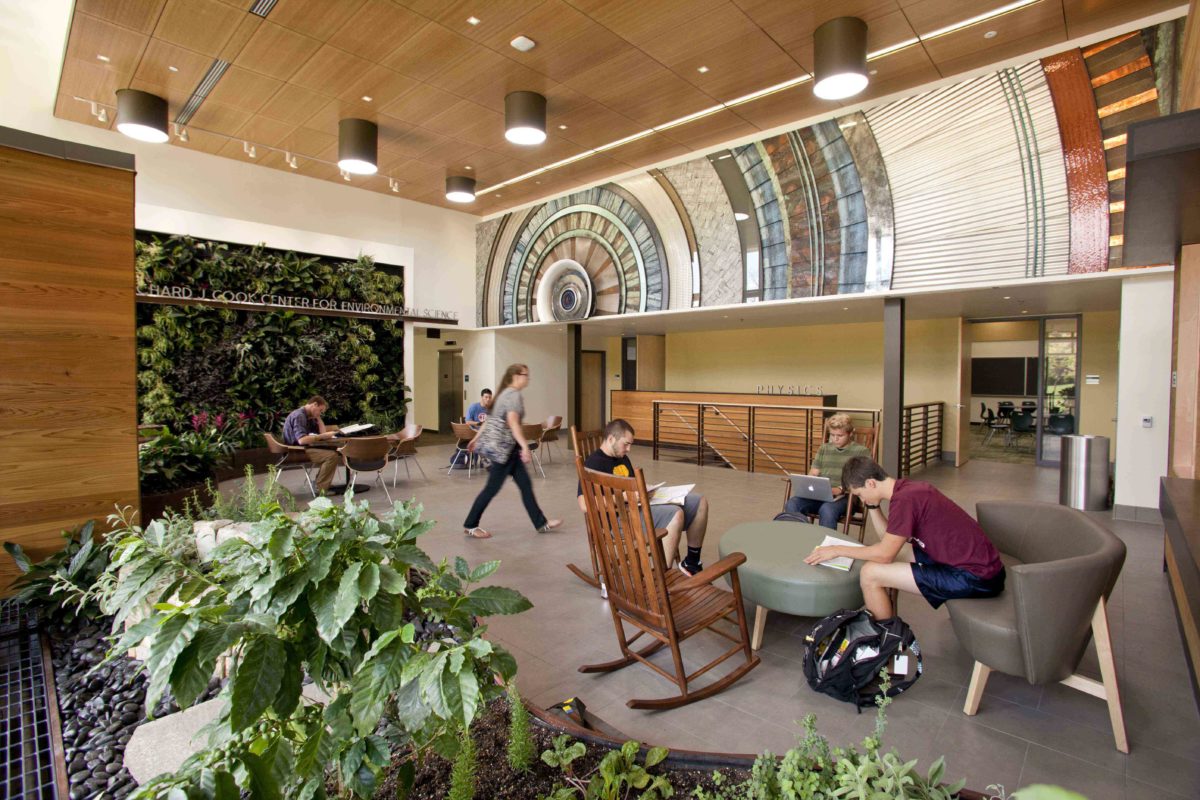
Energy Department Recognizes Allegheny College for National Leadership in the Better Buildings Challenge
May 22, 2013 — The U.S. Department of Energy has recognized Allegheny College for its leadership in the first year of the Better Buildings Challenge. Launched by President Obama in December 2011, the challenge is a national leadership initiative that calls on chief executive officers, college and university presidents and state and local leaders to reduce their portfolio-wide energy use 20 percent by 2020 and then share the results of their energy reduction strategies.
On May 30 Professor of Environmental Science Eric Pallant will be a panelist at an efficiency forum sponsored by the Better Buildings Alliance. He will speak about the college’s Carr Hall renovation project, and the college will be recognized for its leadership as a partner in the Better Buildings Challenge.
Carr Hall is modeled to be 23 percent more efficient due to the renovation. Energy savings were achieved through building envelope improvements, heat recovery techniques and energy-efficient lighting. Carr Hall, which houses the Richard J. Cook Center for Environmental Science, recently achieved LEED Gold certification from the U.S. Green Building Council.
The renovation of Carr Hall is just one component of Allegheny College’s greater efforts to pursue building efficiency and institutional sustainability across campus. Continuing efforts, including building envelope improvements, lighting and boiler retrofits, will be funded through a commitment of $500,000 each year from now until 2020 for energy efficiency projects.
On average, Better Buildings Challenge partners reduced their energy intensity by 2.5 percent in the first year of the initiative, putting them on track to meet the President’s goal by 2020.
“Through the Better Buildings Challenge, our Partners are breaking through barriers to reducing energy intensity and achieving lasting results that save money and create jobs,” said David Danielson, assistant secretary for energy efficiency and renewable energy. “We applaud these Partners for their leadership in making their organizations more energy-efficient which keeps American businesses competitive and communities prosperous.”
To date, more than 110 organizations representing more than 2 billion square feet of space have joined the Better Buildings Challenge and made the commitment to share portfolio-wide energy consumption data, to publicize their cutting-edge projects that demonstrate significant energy savings and to share their approaches to overcoming barriers with the marketplace.